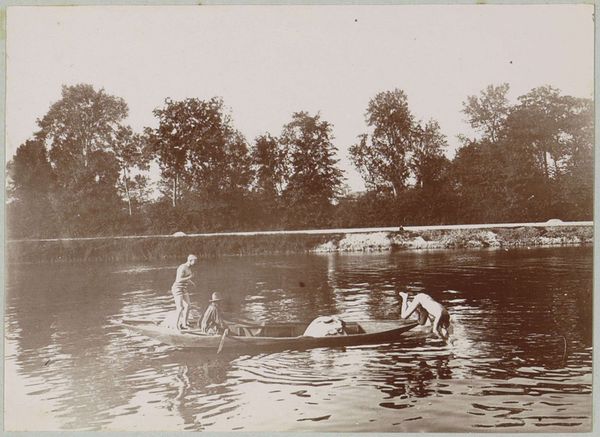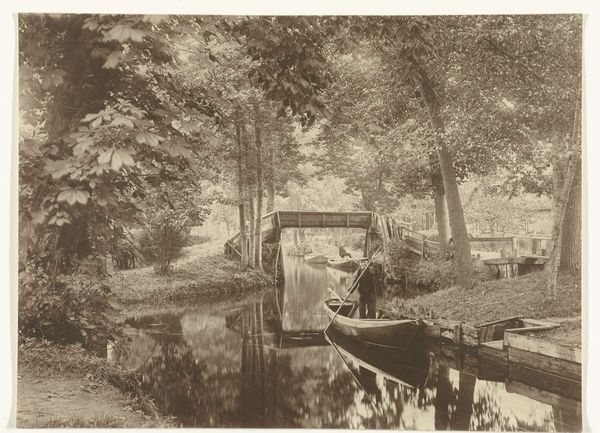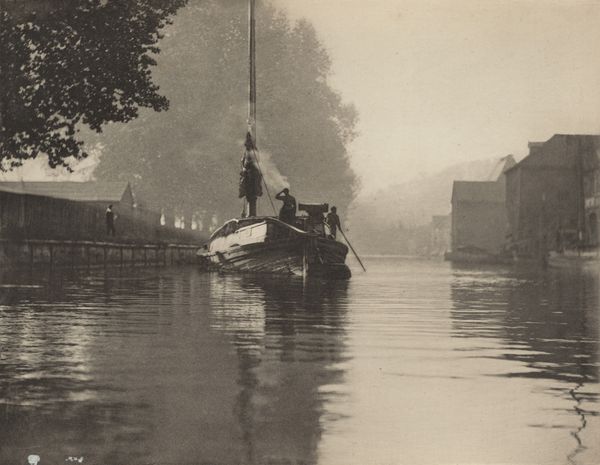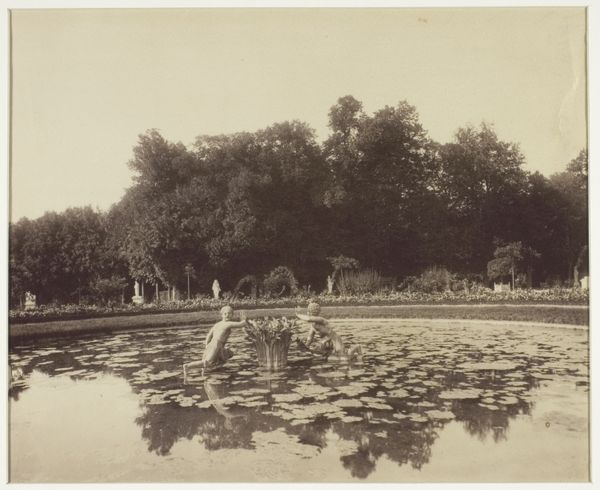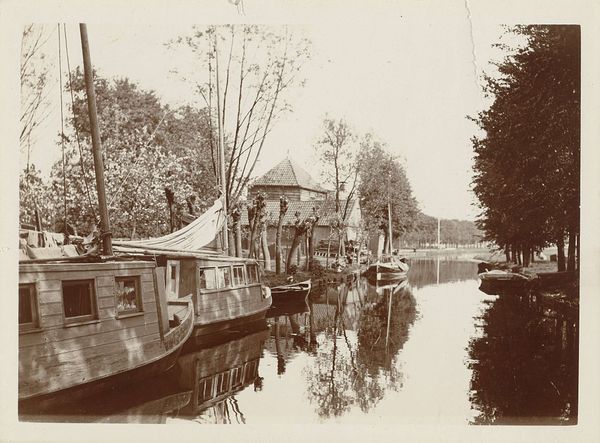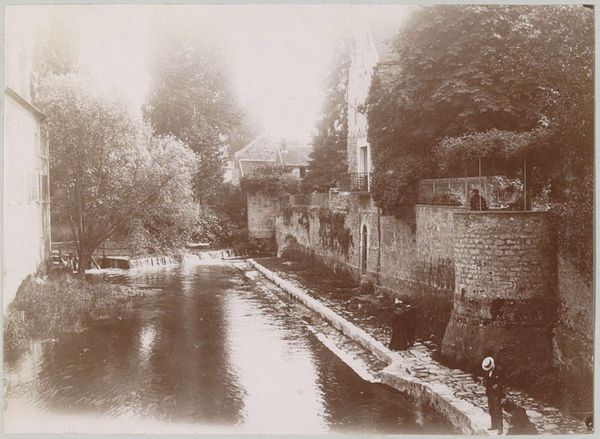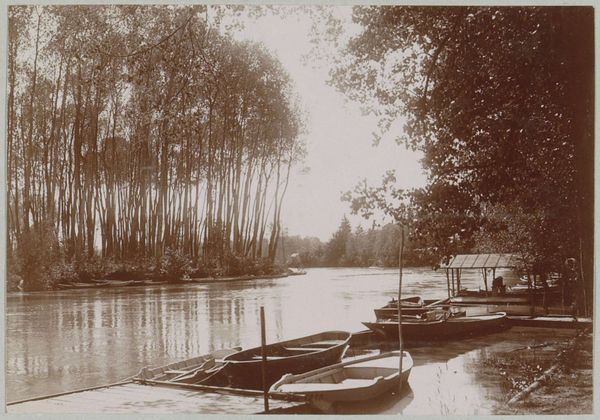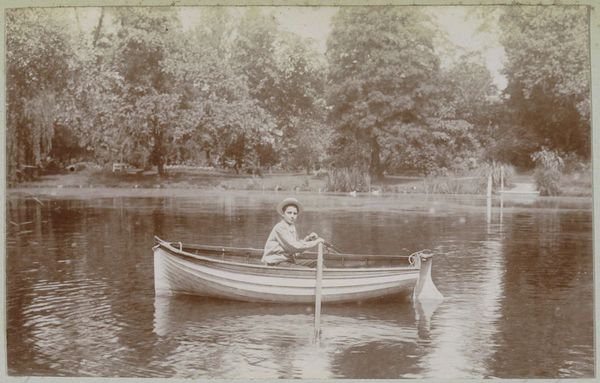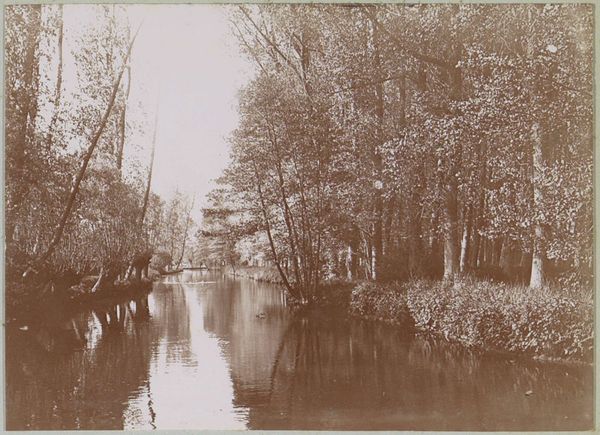
Theodoor Brouwers en arbeiders bij sluis op plantage Accaribo te Suriname 1916 - 1930
0:00
0:00
theodoorbrouwers
Rijksmuseum
photography, gelatin-silver-print
#
dutch-golden-age
#
landscape
#
photography
#
gelatin-silver-print
#
genre-painting
#
monochrome
Dimensions: height 6 cm, width 11 cm
Copyright: Rijks Museum: Open Domain
Curator: Looking at this gelatin silver print, the light and shadow give it such a strong, evocative quality. Editor: There’s a stark stillness to this image, despite the implied movement of the water. Almost like a staged tableau, very formal. Curator: It's a photograph entitled "Theodoor Brouwers en arbeiders bij sluis op plantage Accaribo te Suriname," created sometime between 1916 and 1930. Brouwers documented labor and landscapes in Suriname, giving us insight into its social fabric. Editor: So, this is a slice of life under Dutch colonial rule, quite literally captured with the chemical processes of the era. Look at the varying tones achieved in the water’s surface. Was it locally sourced material for developing the photographic paper? Curator: Indeed. And note the placement of the figures – some perched above, others in boats – subtly emphasizes the existing hierarchy, drawing attention to the laborers' roles. This imagery reinforced racial and labor politics. Editor: It does, it exposes a division based on who's directing labor and who is performing it. Even their clothing signifies their roles. I'm curious about the process; about the development, the darkroom techniques used to realize this scene... the implicit labour involved. Curator: Precisely, and consider how genre painting aesthetics intersect with the colonial gaze to legitimize and romanticize the existing societal imbalances of Suriname during that time. Editor: Right. It is a colonial lens – seeing Suriname and its resources from a decidedly European, commercial perspective, almost certainly intended for distribution, display, consumption in Europe. Curator: Yes, exactly. What initially seems a straightforward snapshot speaks to deeper political and social dynamics, challenging us to rethink notions of progress and justice. Editor: It definitely does, revealing not only the colonial context but the colonial photographic industry as a machine. Curator: A single photograph really encapsulating layers upon layers of complex social systems and production relationships. Editor: Absolutely, that interaction really makes you consider the tangible impacts of colonialism.
Comments
No comments
Be the first to comment and join the conversation on the ultimate creative platform.
